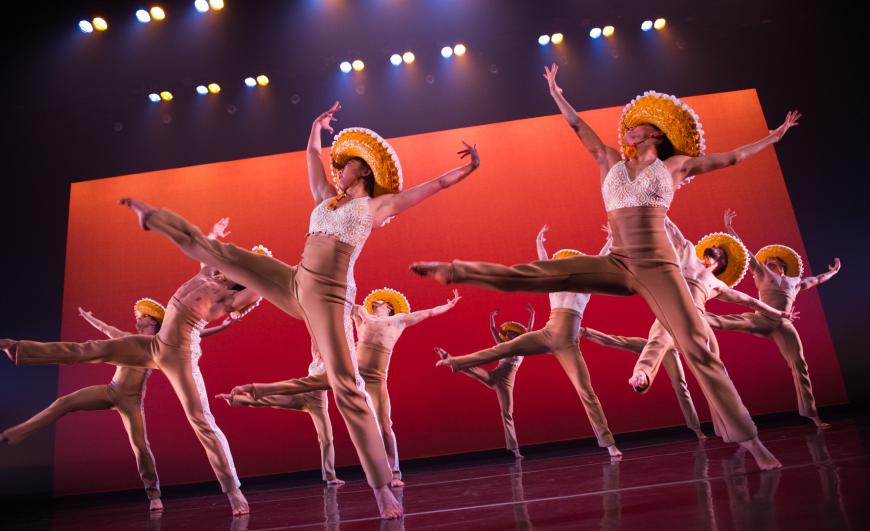
It’s fitting that in the middle of Hispanic Heritage Month, the much-lauded 52-year-old New York-based Ballet Hispánico makes its debut at the Wallis Annenberg Center for the Performing Arts with three shows Oct. 7–8. And for Eduardo Vilaro, who succeeded founder Tina Ramirez as the group’s artistic director in 2009, it’s yet another way for the troupe to continue its mission of bringing communities together to celebrate and explore Spanish and Latin American identities through dance.
Born in Havana, Cuba, in 1964 and raised in New York from the age of 6, Vilaro became smitten with dance after appearing in an eighth-grade production of You’re a Good Man, Charlie Brown. Pursuing his passion in college, he graduated from Adelphi University with a major in dance, and while attending a company class at Ballet Hispánico in 1985, Vilaro was invited to join the corps by Ramirez.
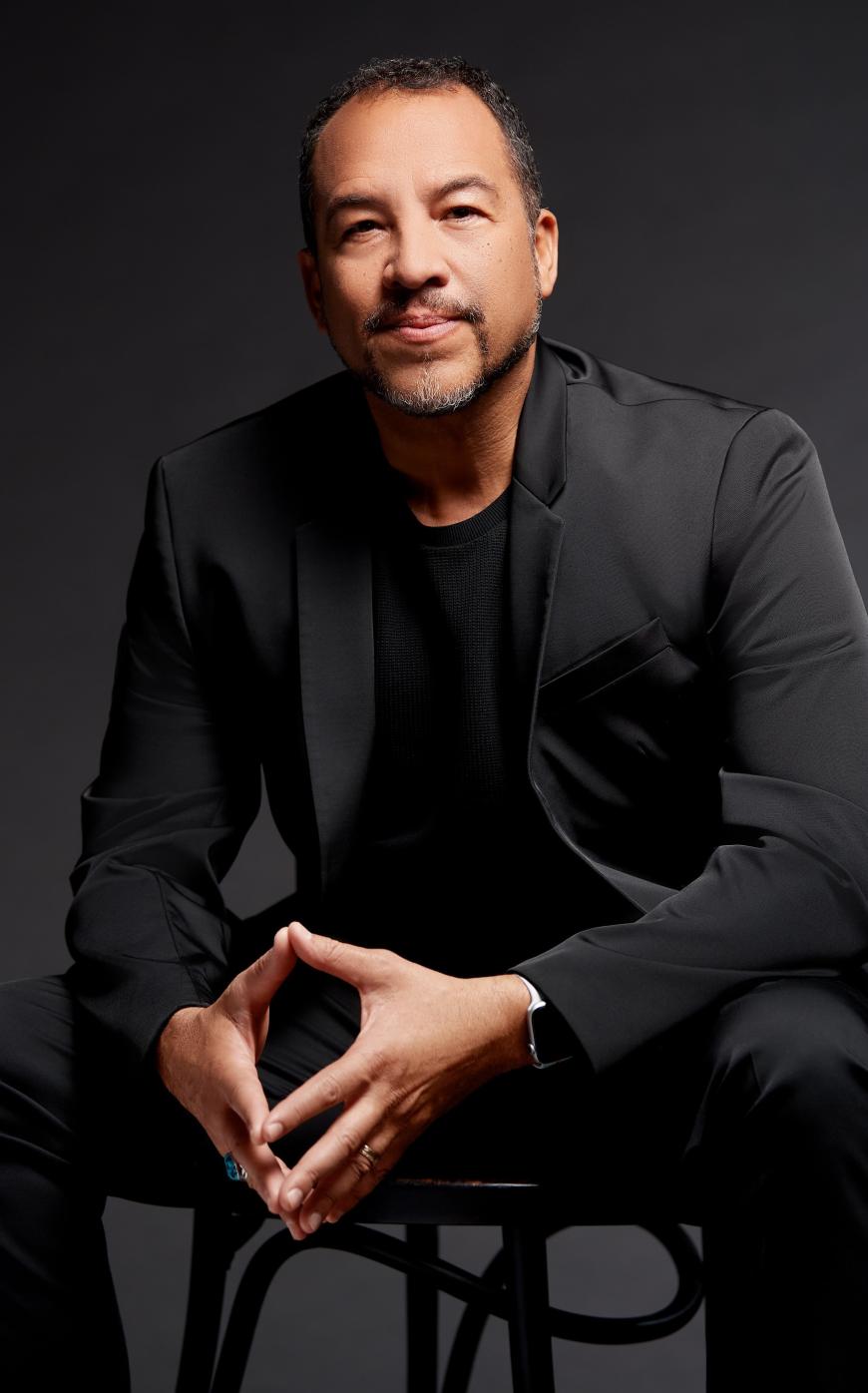
Spending nearly a decade with the troupe as a principal dancer, educator, and choreographer, Vilaro then moved to Chicago, where he founded Luna Negra Dance Theater in 1999. But 10 years later, when Ramirez decided to step down from Ballet Hispánico, she encouraged Vilaro to accept the position. Talk about coming full circle: In 2015 he was also named chief executive officer of BH; he was inducted into the Bronx Walk of Fame in 2016; and, among other accolades, Vilaro was awarded Hombre magazine’s 2017 “Arts & Culture Trailblazer of the Year.”
Much has happened since BH last performed in Los Angeles in 2019, including the global pandemic and Ramirez’s recent passing at age 92 earlier this month. “She was a firecracker, to say the least,” said Vilaro of the woman who built the company into the country’s leading Hispanic dance performance and education troupe. “She had nonstop energy and passion, and what I learned from her most was to be scrupulous about what we’re teaching young people — how we spread knowledge.
“She instilled in me to be a cultural warrior,” added Vilaro. “What she did was she gave access to the Latin community. The big thing I take from Tina was she always urged me to be in tune with what was going on in the world. She wanted me to be a voracious learner, and I did learn that.”
The company, which received a $10 million gift from philanthropist MacKenzie Scott in June 2021, currently has 17 dancers and a repertory of about 115 works, three of which are on the bill at The Wallis. Con Brazos Abiertos (With open arms) had its world premiere in 2017 and was choreographed by Michelle Manzanales, director of BH’s school of dance. The New York Times’ Brian Seibert wrote that the work “grows more wonderful with repeated viewing.” Completing the program are Annabelle Lopez Ochoa’s Tiburones (Sharks), which premiered in 2019, and Gustavo Ramírez Sansano’s 18+1, from 2012.
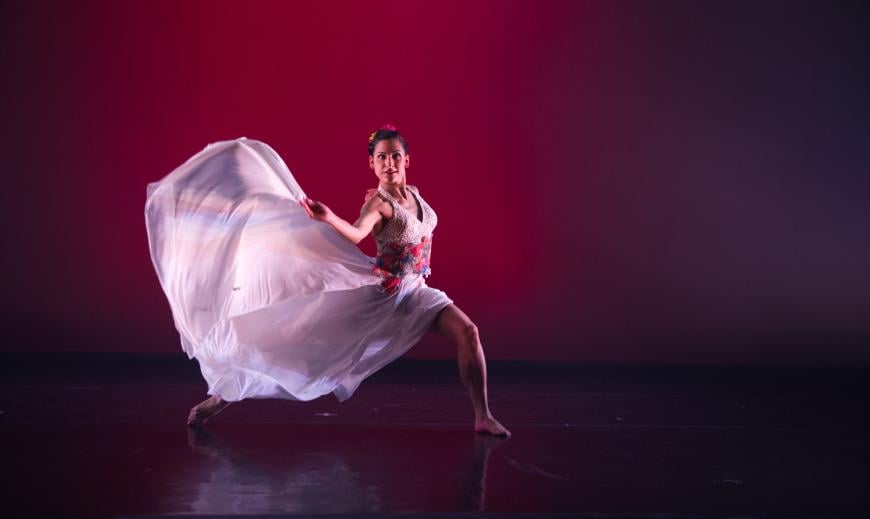
“Michelle’s [dance] is a remarkable piece set with some humor and bittersweet images,” explained Vilaro. “It talks about the immigrant experience and feeling somewhere between ‘I’m not American enough’ and ‘I’m not Mexican enough.’ It’s a lovely piece with a variety of music, from Mexican rancheras to contemporary songs.”
Tiburones here refers to the Puerto Rican gang in West Side Story. The work takes place on a movie set, which is conjured by lights, camera, and a male authority figure with a clapperboard. Lopez Ochoa’s dance questions the authenticity of representation in both the 1957 musical and 1961 film. Also vexing the choreographer and Vilaro was the notion of yet another Broadway revival (Ivo van Hove’s production, opening in February 2020 and closing three weeks later) and Steven Spielberg’s 2021 remake of the classic film.
“Annabelle and I were shocked that there was [going to be] another revival, a resurgence of the need to have West Side Story, which left so many cultural scars on the community. That’s not who we are anymore. You can’t continue to replicate that. Not for nothing would there be another white male director and choreographer to do our story. I needed a woman — of any color — but a person of color.”
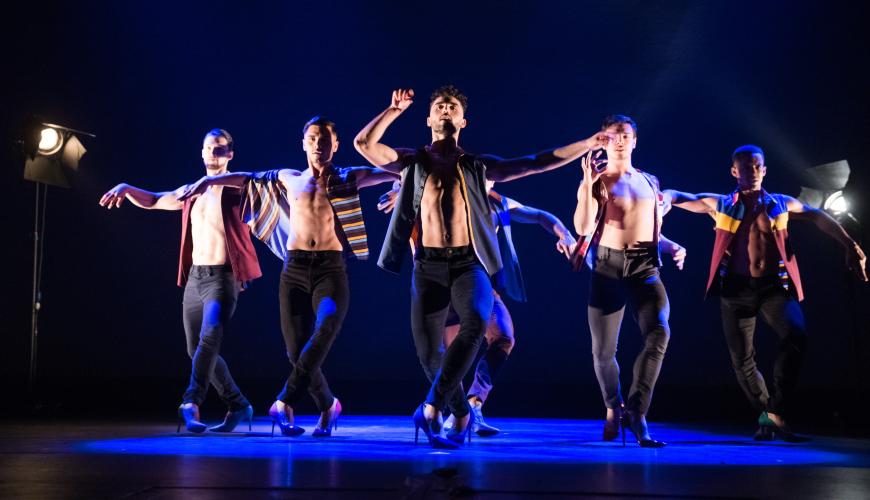
Vilaro continued, “We thought, we have to create something that looks at how a singular perspective tries to push you into a stereotype. It’s lots of fun, with great music, finger snapping, and high heels. But I won’t tell you if it’s boys that are wearing them.”
The concert concludes with Ramírez Sansano’s 18 + 1, a dance that Vilaro noted is “a rollicking piece. His movement is so quirky and yet voluptuous at the same time. It’s another part of who we are. Sometimes we don’t need to show a cultural icon. This is about pure dance movements set to Latin lounge music that’s bombastic and fun.”
Vilaro also continues to teach “all the time, especially when I’m on the road,” he said. He’s also working with the Metropolitan Museum of Art on a project scheduled for July of next year. As for what Vilaro seeks in a choreographer, he stressed, “I’m looking for people who are interested in exploring the Latine experience. Latinx doesn’t work in our language, but Latine is inclusive because it is non-gender specific, which was what Latinx was trying to be.
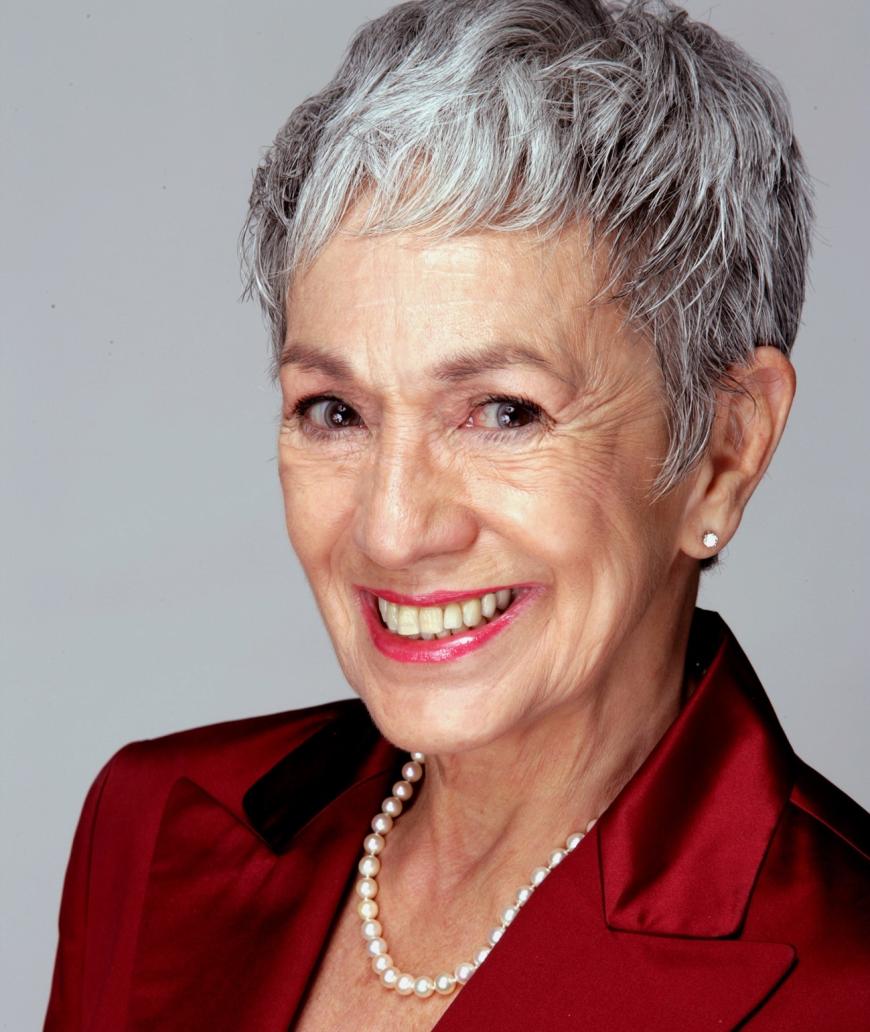
“But I tend to use all of them,” he continued, “Latino, Latina, Latine culture, as well as innovative ways of using dance to change narratives.”
In addition, Vilaro looks for dancers with big personalities. “I need their personalities to reach the highest heights of a theater. I don’t like deadpan dancers. And musicality — you got to get down. I love dancers that don’t come with a strict technique and who grew up in hip-hop, tango, flamenco. I love eclectic dancers.”
Indeed, Vilaro’s love for the art form might only be surpassed by his devotion to community. “It’s important for me because that’s how I learned. It’s how I grew up. Community was so important because we were so marginalized. We gathered together to uplift ourselves and uphold ourselves. We need to continue that. It’s a tradition, but for us it’s so much more.
“It’s the way we’ve learned how to fight the good fight. When we go into a community, I try to ask the theater, ‘How can I reach out? How can Ballet Hispánico connect deeper?’ In those theaters, you don’t see a lot of us. We need to do that work. We speak the language, so we should be doing it.”



